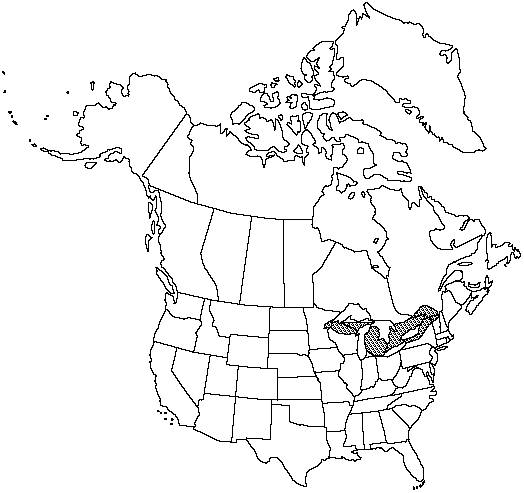Botrychium rugulosum
Contr. Univ. Michigan Herb. 15: 315. 1982.
Trophophore stalk 2 to 15 cm, 1–2.5 times length of trophophore rachis; blade green, finely rugulose and convex distally, 2–4-pinnate, to 15 × 26 cm, somewhat herbaceous. Pinnae to 9 pairs, usually approximate, horizontal to ascending, distance between 1st and 2d pinnae not or slightly more than between 2d and 3d pairs, divided to tip. Pinnules obliquely and angularly trowel-shaped to spatulate, margins usually denticulate, apex acute, venation pinnate. Sporophores 2-pinnate, 1–2 times length of trophophore. 2n =90.
Phenology: Leaves green over winter, appearing in midspring.
Habitat: In open fields and secondary forests over wide range in vicinity of St. Lawrence Seaway
Elevation: 200–1000 m
Distribution

Ont., Que., Mich., Minn., N.Y., Vt., Wis.
Discussion
The name "rugulosum" refers to the tendency of the segments to become more or less wrinkled and convex. Botrychium rugulosum occurs with B. dissectum, B. multifidum, and rarely B. oneidense. It is often found in small stands of only 5–10 individuals, but some populations number over 100.
Selected References
None.